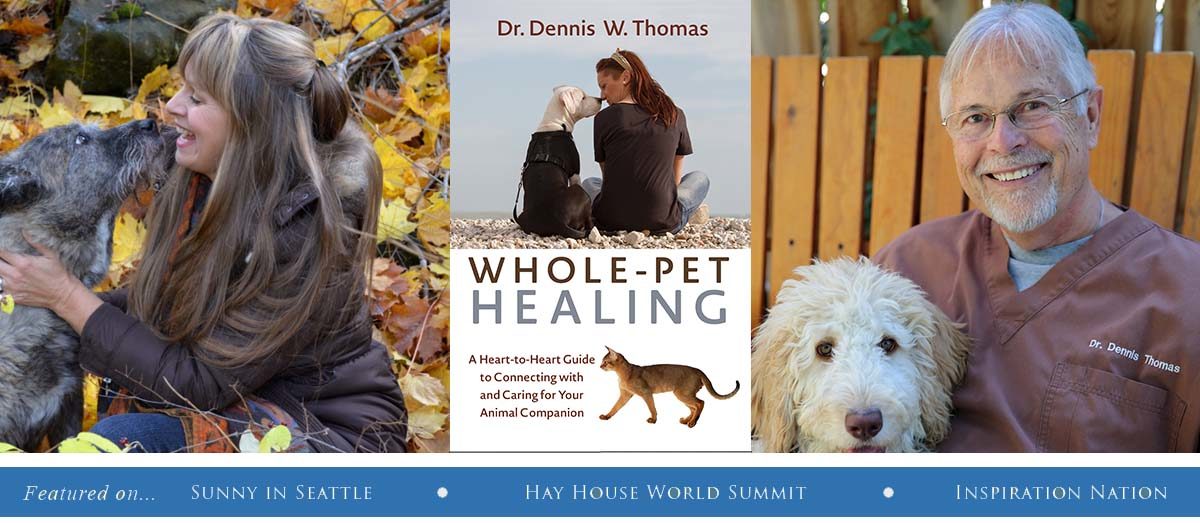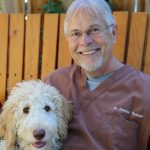I remember years ago when I was in vet school. We had two large animal clinicians who had been in practice for many years, retired from practice and were hired as clinicians at the vet school. These two cow-practitioners had a wealth of experience and knowledge. When a client would back his trailer with a sick cow to the unloading ramp at the large animal clinic, the two vets would literally run out to the parking lot in a race to see who would diagnose the sick cow first. The vet students were enthralled to watch these two clinicians work. Little did the students know, that the old practitioners were stuck in a rut that often comes with years of practice.
I am reminded of the fictitious story that I included in my book, Whole-Pet Healing, about the mechanic that lived in a small town. The mechanic was to only mechanic in town so everyone who had a car in need of repair took the vehicle to him. He had quite the reputation as being a great mechanic. A young boy who lived in the town had an interest in becoming a mechanic so he went to the old fellow and asked him if he could be his mentor. The mechanic was happy to teach the young fellow. He took him to the back of the shop and opened his tool box. It was full of screwdrivers; every type of screwdriver that one could have. The old mechanic’s eyes grew wide as he showed the young fellow all of his screwdrivers. He told him how each one of them worked and how, in time, he would have the same knowledge and experience.
Whenever a car in need of repair would come to the shop, the old mechanic would whip out the appropriate screwdriver and repair the car. In the event that he could not repair the car, he would tell the customer that the car was not repairable and recommend that it was time for a new car.
One day, a tool salesman came by the shop and the only one there was the young apprentice. The salesman asked if he could show him some tools. Eager to learn, the young mechanic agreed. The salesman brought out a wrench. The boy was amazed. He had never seen one and was amazed as to what it could do. He bought the wrench and started using it on his cars. In no time, he was fixing cars that the old mechanic was incapable of repairing. In time, the people of the village requested the young mechanic and soon the old mechanic retired.
Unfortunately, this is what happens all too often in medicine. We practitioners get so comfortable with our intelligence and experience that we get stuck in a rut and refuse to get out of it. We come across a sick pet who we cannot help using our old screwdrivers and we tell the client that it cannot be cured. Time for a new pet.
Clinicians, both human and veterinarians are walking representations of a combination of intelligence (book smarts) and experience. Unfortunately, the intelligence is often lagging because of a lack of desire to learn something new and the years of experience starts to pile up using only the book smarts, creating a very confident practitioner who is no longer aware of his limitations.
I recognized this when I was in vet school. It was so easy for the clinicians to ignore the white elephant in the room, to be so attached to the book knowledge and experience, that they were comfortable in the rut of limited knowledge. I remember the day when the clinical was lecturing about urinary problems in dogs. He started taking about estrogen responsive urinary incontinence and that when a dog is spayed, we remove the ovaries, the source of estrogen production. He stated with confidence that the estrogen is responsible for the urinary bladder sphincter strength and without estrogen, the sphincter became flaccid and incapable of contracting enough to hold the urine. Sounded logical. Then, he mentioned that we see this happening in 5% of all dogs that are spayed and then he moved into what drugs are used to treat the problem. WAIT A MINUTE. What about the white elephant in the room? If the estrogen is the only component in this clinical problem, why don’t all dogs that are spayed develop urinary incontinence? I had the audacity to ask the question. I was ignored and forty years later, we are still ignoring that white elephant.
So, what does this have to do with your pet’s health care? It means that if you want the mechanic with the screwdriver to work on your car, you better get ready to buy a new car. The conventional veterinary medical approach to health care is a narrow pathway with many limitations and will often lead to dead ends with no options or options that are not desirable. When this happens, what are you to do? Choose another pathway. You do not have anything to lose.
I have treated hundreds of pets whose caretakers were told that nothing more could be done for their pet’s health problem. What the caretaker did not understand was that there was nothing that could be done while on that pathway of book smarts and experience. Going along a different pathway using alternative modalities and natural remedies often leads to remarkable results that cannot be explained by the limitations of conventional medicine.

